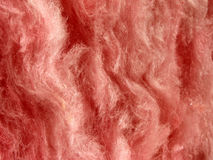Insulating your home is one of the most effective ways to save on energy costs and improve indoor comfort. There are several types of insulation to choose from, each with its own unique benefits and drawbacks. Here’s a rundown of some of the best insulation options for your home:
Fiberglass
Fiberglass is one of the most common and affordable types of insulation. It is made from recycled glass and comes in batts or blown-in form. Fiberglass is easy to install, fire-resistant, and provides good thermal resistance.
Spray foam
Spray foam insulation is sprayed into walls and ceilings, where it expands and hardens to create a tight seal. It provides excellent insulation and air sealing properties, but is more expensive than fiberglass and can be challenging to install.
Cellulose
Cellulose insulation is made from recycled paper and is often treated with fire-retardant chemicals. It provides good insulation performance, is relatively low cost, and is easy to install.
Rigid foam
Rigid foam insulation is a solid, dense material that is often used in walls, roofs, and floors. It provides high insulation performance and is moisture-resistant, but is more expensive than other types of insulation.
Natural fibers
Natural fibers such as cotton, wool, and hemp can be used as insulation in your home. They are environmentally friendly and have good insulation properties, but are also more expensive than other types of insulation.
Radiant barriers
Radiant barriers are thin sheets of material that reflect heat away from your home. They are often used in attics and can significantly reduce your home’s cooling costs in hot climates.
When choosing the best type of insulation for your home, consider factors such as cost, R-value (the measure of thermal resistance), installation ease, and environmental impact. Working with a professional insulation contractor can help you choose the right insulation for your needs and budget.
By properly insulating your home, you can enjoy a more comfortable indoor environment, lower energy bills, and reduced greenhouse gas emissions. So, take the time to research and select the best insulation option for your home today.

